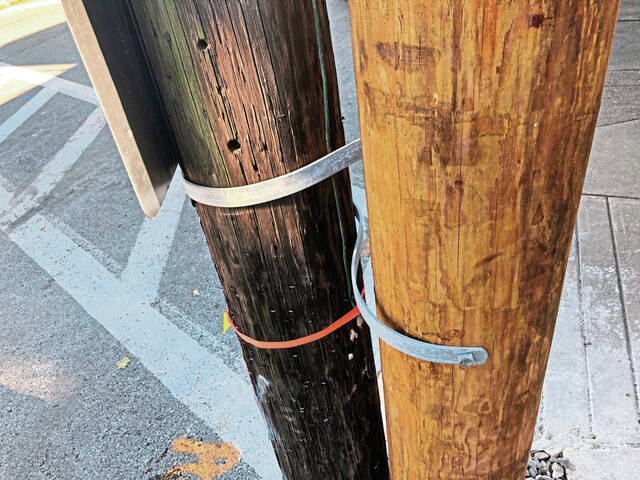Editorial: Ghost poles bill would exorcise utility danger
Utility poles make so many things possible.
The National Electrical Safety Code says the standard height of the poles is 35 feet. They serve as the intersections for the utilities supporting modern life. They can carry various kinds of electrical lines, from the highest powered transmission lines to industrial lines to the residential ones that provide energy to homes. They might connect people to telephones, cable or internet.
But they do not last forever. Best case scenario, wooden utility poles can have a lifespan of 40 or so years, according to the North American Wood Pole Council, which ought to know. When they are replaced, it is due to deterioration of the pole or because of road work. About 13% are for line upgrades. Another 5% are because of vehicle damage.
This is where ghost poles come in. Have you ever seen two utility poles up against each other? That is what happens when a pole is being replaced and all the utility companies that use it have to move their wires from the old pole to the new one. The last service to remove their wires is supposed to take down the pole.
Often that doesn’t happen. The old pole stands there like a conjoined twin. It might be at a wonky angle. It might be at the end of that service life. It might not be up to more winter winds and thunderstorms.
“It’s a safety hazard,” said John Nagoda, a council member in Export where a ghost pole has been lashed to its neighbor for about 10 years.
According to the U.S. Department of Transportation, about 1,400 people nationwide are killed annually because of utility pole crashes. Utility poles are a factor in about 2,500 crashes each year. That’s hard to mitigate because of the necessary service they provide. But ghost poles provide no such service.
Then there are the problems of a pole brought down by wind or weather. At hundreds of pounds, they can cause damage or death. They can block roads. They can pull the wires from their twinned pole and disrupt service or cause an electrical danger.
A bill in the state House of Representatives would give the Public Utility Commission the power to enforce a schedule for removing ghost poles.
House Bill 1619 would do things like set a bond for utilities that use another company’s pole so that the owner could move wires or rectify abandoned lines without expense. It would also pay an owner to take down a pole if that last utility took down its lines but not the pole. If nothing else, it requires accurate contact information for all non-owner users.
It is surprising this process hasn’t been in place. This is one of those rare cases where the plan seems to benefit the people, the government and private companies.
Remove the ads from your TribLIVE reading experience but still support the journalists who create the content with TribLIVE Ad-Free.

